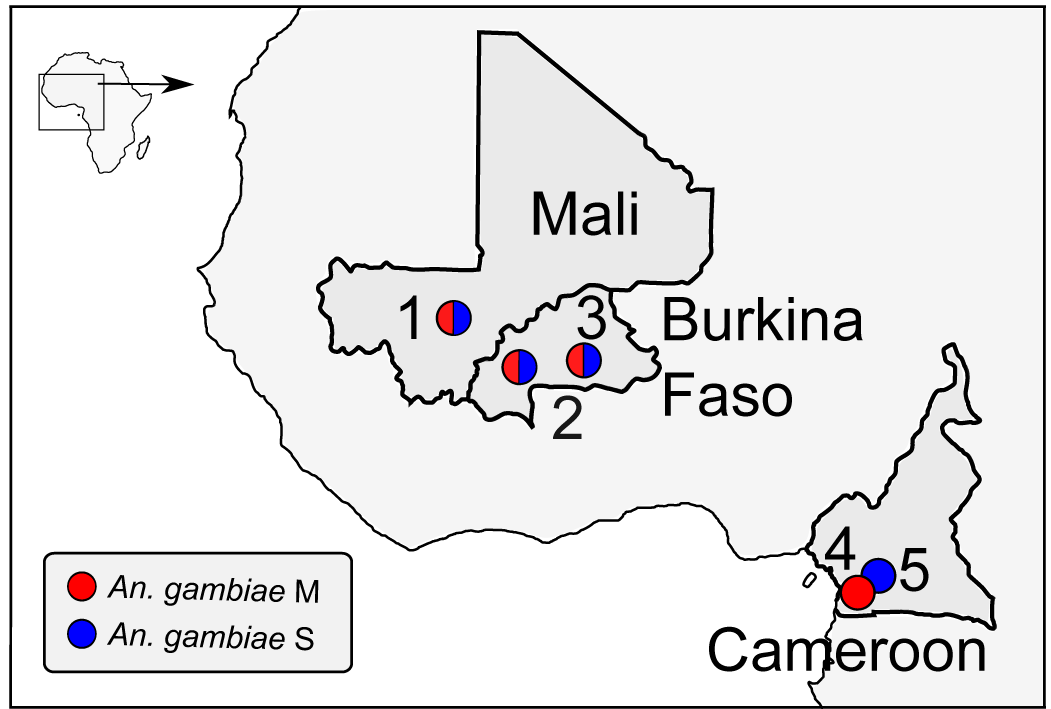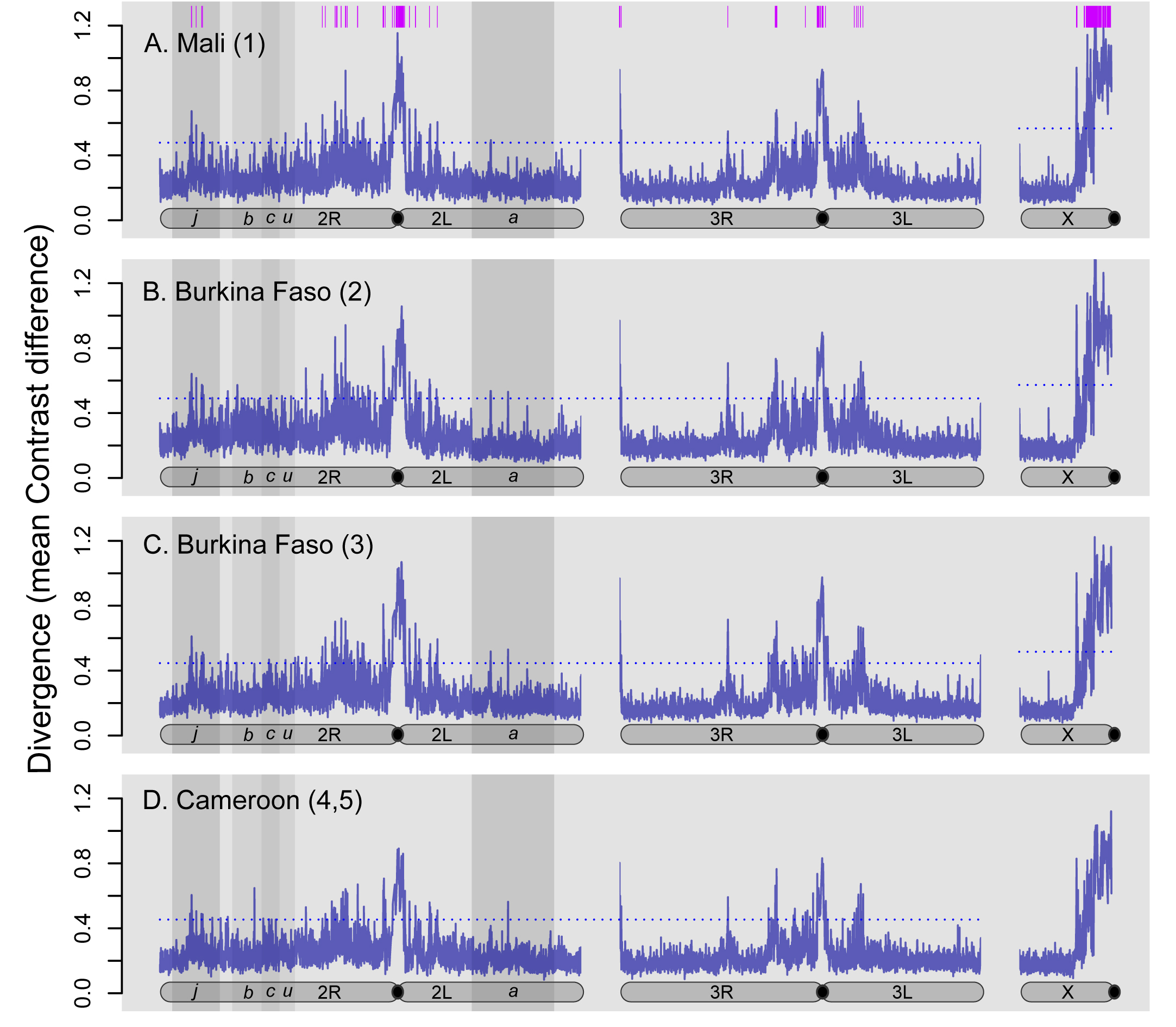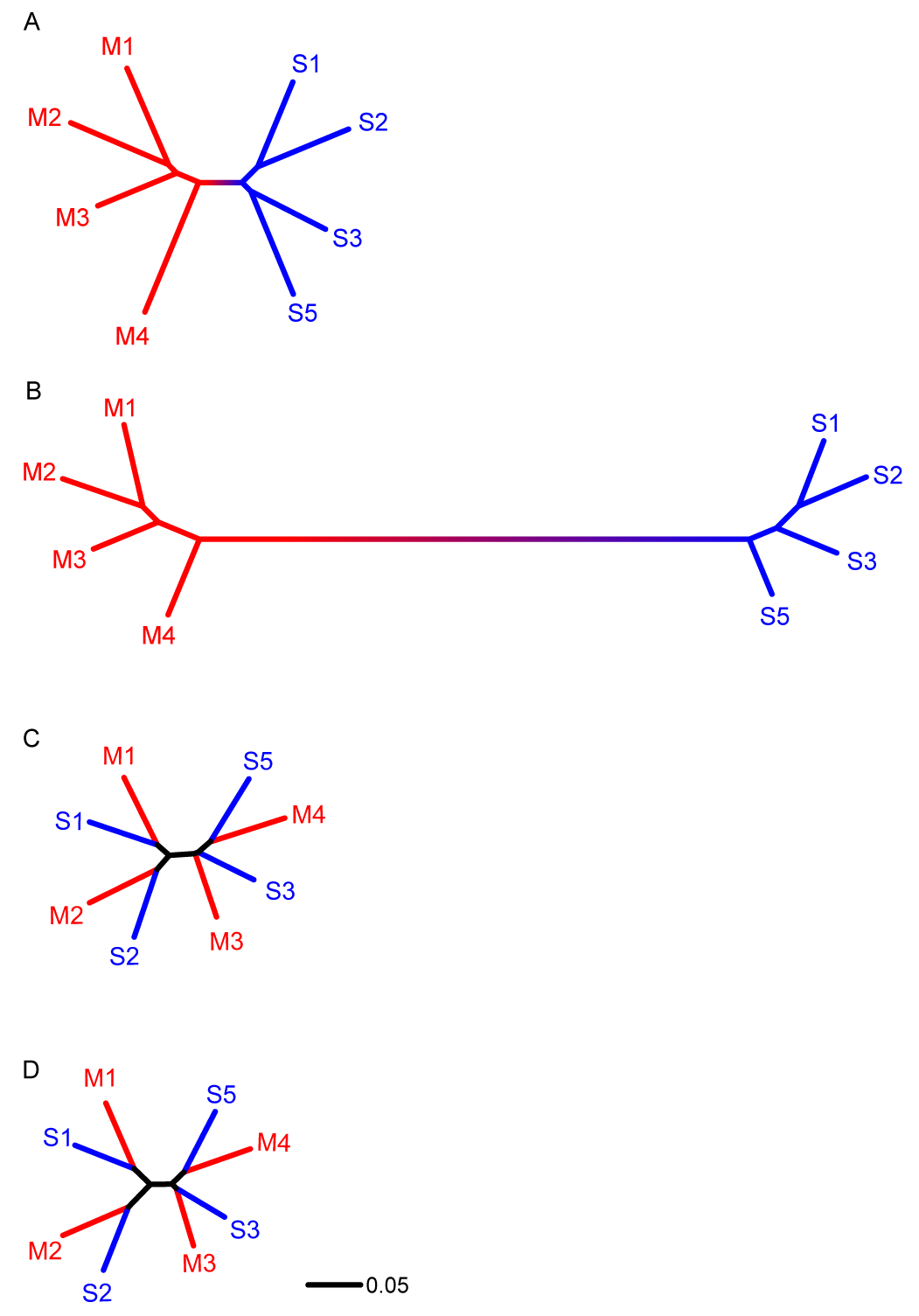Ecological and Speciation Genomics of An. gambiae and An. funestus
These two Afrotropical species each belong to cryptic species complexes bearing their names, and both nominal taxa display considerable genetic heterogeneity and population structure suggesting further genetic subdivision and potential speciation. Mounting evidence indicates that genetic heterogeneities—which include differences in susceptibility to insecticides and Plasmodium—are correlated with differences in ecology, seasonality, geography, and behavior. Most recently we are using whole genome sequencing of samples from natural populations to define breeding units and identify the genetic determinants and evolutionary processes shaping their divergence. In parallel, we are working with African collaborators to understand the ecological determinants of larval habitat specificity, which differ between closely related taxa. This information will enable more accurate predictions of vector distribution and abundance, and will also facilitate more efficient targeting of vector control.
Collaborators:
C. Costantini (IRD, France/OCEAC, Cameroon), D. Ayala (IRD, France), I. Morlais (IRD/OCEAC), F. Simard (IRD, France), D. Fontenille (IRD, France), W. Guelbeogo (CNRFP, Burkina Faso), N.F. Sagnon (CNRFP, Burkina Faso)
Genetic Epidemiology Network (MalariaGen)
The HEG Consortium (FNIH/Grand Challenges in Global Health)
The Anopheles 16 Genomes Consortium (The Broad; AGCC Wiki on Vectorbase)
 Fig. 1. Sampling locations in Africa
Fig. 1. Sampling locations in Africa Fig. 2. Genome scan of divergence along chromosome arms
Fig. 2. Genome scan of divergence along chromosome arms Fig. 3. Genetic distance trees based on alternative genome partitions
Fig. 3. Genetic distance trees based on alternative genome partitions